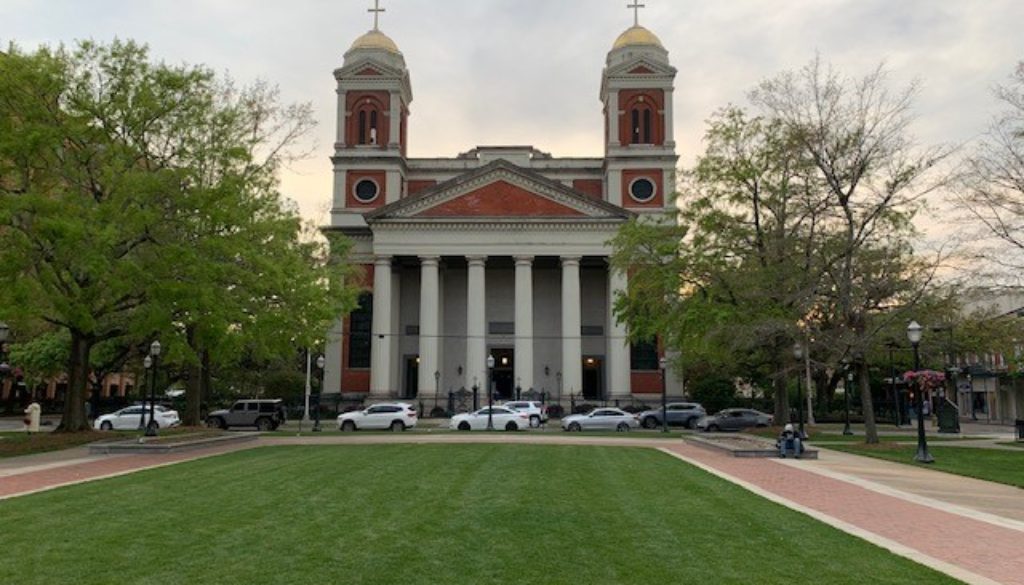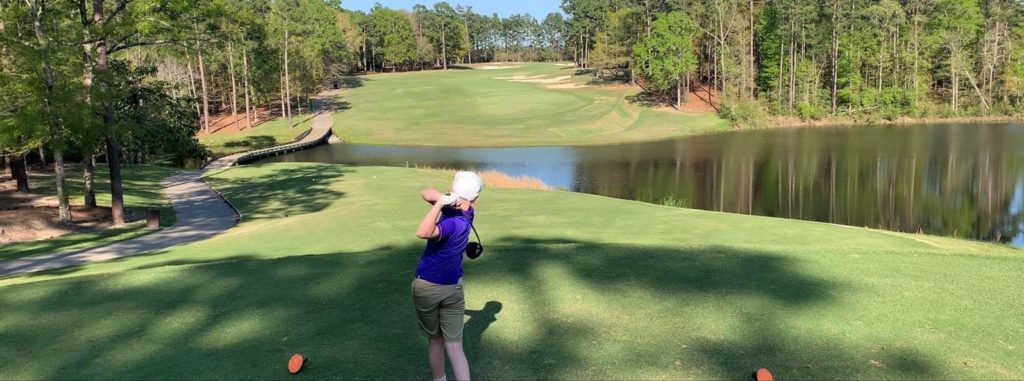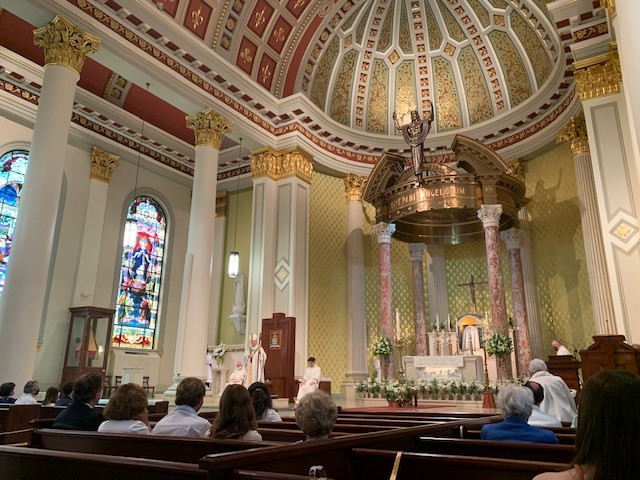Easter in Marseille

Mobile, AL
April 5, 2021
One of the more memorable Easters we ever spent was over two decades ago, in Blois, on the right bank of the Loire. We spent a week in the valley, a day in the town, and an evening at its cathedral.
As the sun set, we immersed ourselves in the Vigil Mass. Into a packed church and thru a darkened nave, the bishop proceeded…trailing a procession of priests, deacons, and altar boys, each carrying lighted candles to the 17th century altar.
When that cathedral was constructed, Louis XIV occupied the French throne, and was busy throwing his weight around. Much of the fat fell to the east, clogging Europe with conquest. The expanding royal waistline was most conspicuous at home, where it larded with art and jewels the royal land and ladies around Versailles. But a few pounds went west.
Across the Atlantic, the fleur-de-lis filtered into Québec. It eventually spread round the Great Lakes, and down the Mississippi Valley. From the south, French ships plied the Gulf, seeking to control its shores to preserve Louis’s claims to the American interior.
After passing a new Spanish settlement at Pensacola, and faltering briefly at Biloxi, the Le Moyne brothers planted the Bourbon flag at La Mobile. The site provided a viable port for distant commerce and enviable visibility to nearby Indians, which eased trade and facilitated defense.
In 1703, a parish rose at Fort Louis de la Louisiane, under the bishopric of Québec. When the settlement moved to its present site in 1711 and became the first capital of French Louisiana, the parish church went with it, and assumed the name of Our Lady of Mobile.
As commerce struggled, forts rose, and disease spread, the French kept their priorities, and found time to begin and retain the first Mardi Gras celebration in new world. The settlement stuck and…till the rise of New Orleans over subsequent decades…became something of a backwater Marseille, a nascent port feeding and defending the untapped potential of New France.
By 1781, with Mobile under Spanish dominion, its rustic shrine was rechristened as the Church of the Immaculate Conception. When the Diocese of Mobile was established in 1829, its first bishop envisioned a new edifice for his cathedral.
Ground broke in 1835 and the building was consecrated in 1850. Within a couple decades, two majestic towers and ten Doric columns added dignity and grandeur to the Greek revival structure.
A couple years after the Cathedral was consecrated, the Battle House hotel opened on Royal Street. Today’s structure was erected in 1908, after a fire destroyed the original edifice.
The building sits on the site of Andrew Jackson’s military headquarters during the War of 1812, and has hosted many other political and literary luminaries. Stephen Douglas stayed here the night he lost the presidency to Abraham Lincoln. Jefferson Davis, Millard Fillmore, and Oscar Wilde were among guests who arrived too early to earn Marriott points, but often enough to receive a plaque.
The elegant lobby pays homage to the sovereigns who served Mobile. Around the rotunda, on each point of the compass, Louis XIV, Ferdinand V, George III, and George Washington represent in high relief and coats of arms the respective flags that have fluttered in the breeze over Mobile Bay.

The last few days, that breeze has been light, crisp, and refreshing…carrying few clouds and low humidity. The morning chill beckons a sweater or scarf. But by noon, those fall away, as shirt sleeves and short pants allow ample enjoyment of picture-perfect Easter weather.
Unlike the French, we reached Mobile by land. We left Atlanta Friday, and interrupted the five hour drive with a pleasant interlude in Auburn. That evening, Alexander joined us for dinner at the Amsterdam Café. The next morning, David, Rita, and I continued south.
Like the French, we have our priorities. Before checking into the Battle House, we teed off at Magnolia Grove, at the southern end of the Robert Trent Jones Golf trail. “The Trail” is a series of 26 courses spread across eleven locations throughout Alabama, and is a great outlet for golf weekends.
For years, my brother and I annually joined a group of twelve to sixteen guys on the Robert Trent Jones course complexes in Birmingham, Montgomery, or Auburn. We’d play thirty-six holes by day, then…like most men on such trips…drink coffee, knit blankets, and discuss novels deep into the night.
Saturday, Rita joined David and me on the Magnolia Grove short course. We then made our way to the Battle House. We checked-in, brought dinner to the room, and watched Gonzaga beat UCLA in one of the best basketball games we’ve ever seen.
Yesterday afternoon, David and I played The Crossing course, one of two full eighteen-hole layouts at Magnolia Grove. It’s beautiful terrain, and compares favorably to any Trail course I’ve played.
Perfect weather and an empty course enhanced the experience. Easter no doubt quelled the crowds. We had the back nine to ourselves. On the front, we were delayed on only a couple holes…by a group of six!
The three carts were regularly back and forth across the fairway. But rarely on it. They looked as tentative and lost as the Nina, Pinta, and Santa Maria. Finally, from the seventh green, their occupants looked back and saw an impatient twosome waiting for them to clear. Mercifully, they waved us through.
When we met them on the green, we learned why they were taking so long. Four guys were playing, with two girlfriends joining as indifferent spectators and casual caddies. As David and I walked off the green, one of the girls sat in the cart, and was suddenly startled away from social media.
“Hey, baby”, one of the guys yelled to her from the green. “Cain you brang me mah putter? Mah foot hurts, and ah cain’t wawlk without pain.”
As any good caddie would, his girlfriend put down her phone, and asked for clarification.
“Which one’s the putter?”
Dropping his shoulders and rolling his eyes, the boyfriend provided an empathetically detailed reply. “It’s the one that looks lahk a dayam board on the end of a stick!”
David and I hopped quickly into our cart, sped to the next tee, and never looked back.

Before our round, Easter dawned cool, clear, and bright. From the hotel, we walked several blocks along Dauphin Street, past iron balconies and stately squares, reminiscent of New Orleans or Savannah. An arrangement of columns and expanse of grass mark the square which fronts the Cathedral.
Along the Dauphin Street side, people filled the Spot of Tea Café. Tables covered the sidewalk to accommodate the lucky overflow enjoying breakfast under immaculate spring weather. We would soon be there for lunch. But first, we passed thru the columns, under the towers, and into our pew. As the bells chimed and the incense rose, the bishop made his way toward the altar.

The Mass was beautiful, and welcome. Last Easter, most churches were closed. From our family room couch, we sat in a dystopian stupor, and watched online as our Monsignor said Mass from an empty chapel in our parish church. A year later, on a beautiful morning in a gorgeous cathedral, Easter returned.
Fleur-de-lis still fill the ceiling that covers the cathedral, a touch of old Marseille in modern Mobile. Beneath the rafters, the congregation received a physical manifestation of spiritual liberation. May it be a harbinger and blessing to all who were there.
And to everyone else.
JD




The Battle of Wounded Knee – JD Breen's Diary
May 2, 2021 @ 1:25 pm
[…] remedy is immobilization, which means confinement. He was at the vet for one week while we were in Alabama, and we kept him isolated a few days when he returned […]